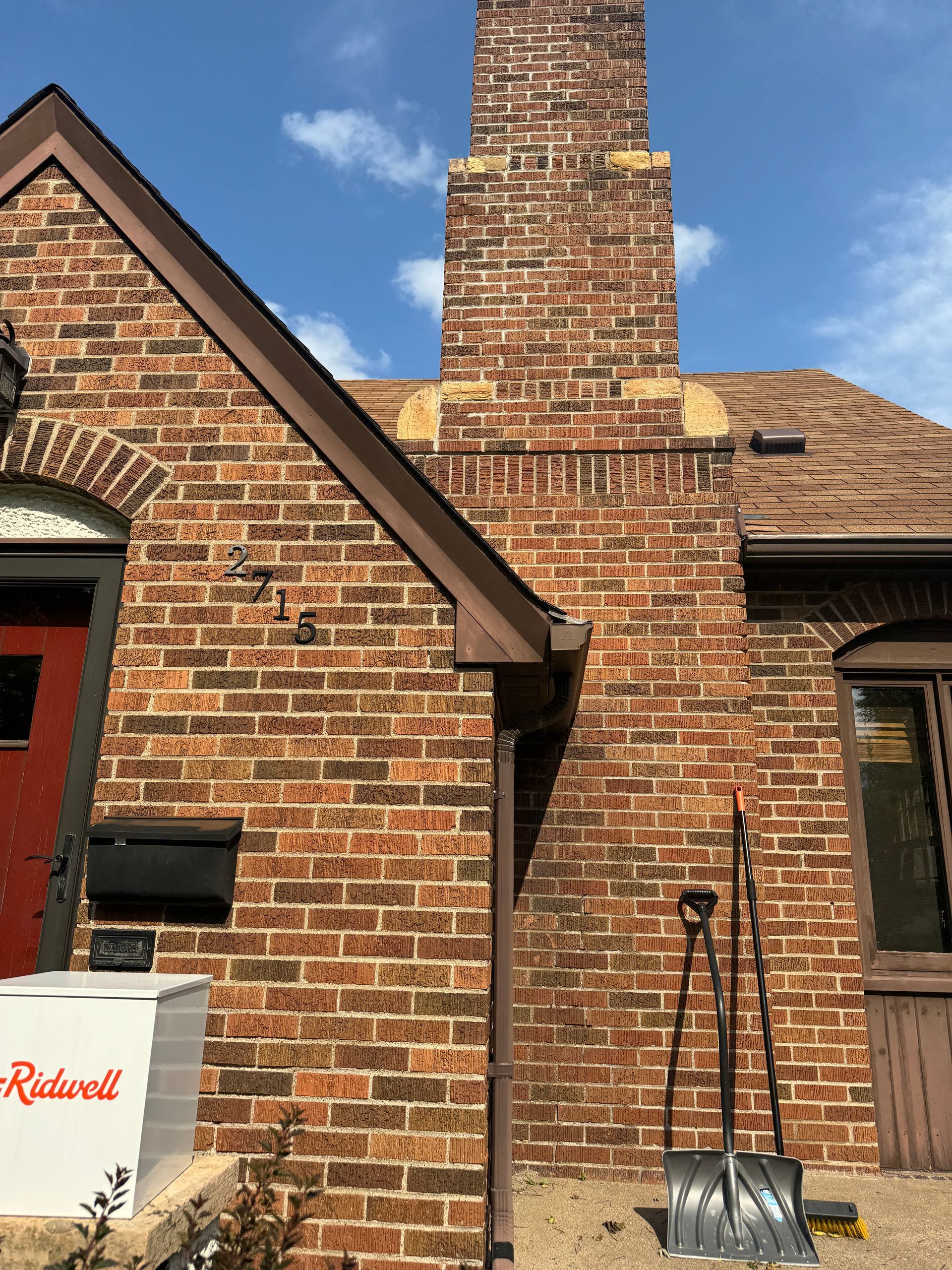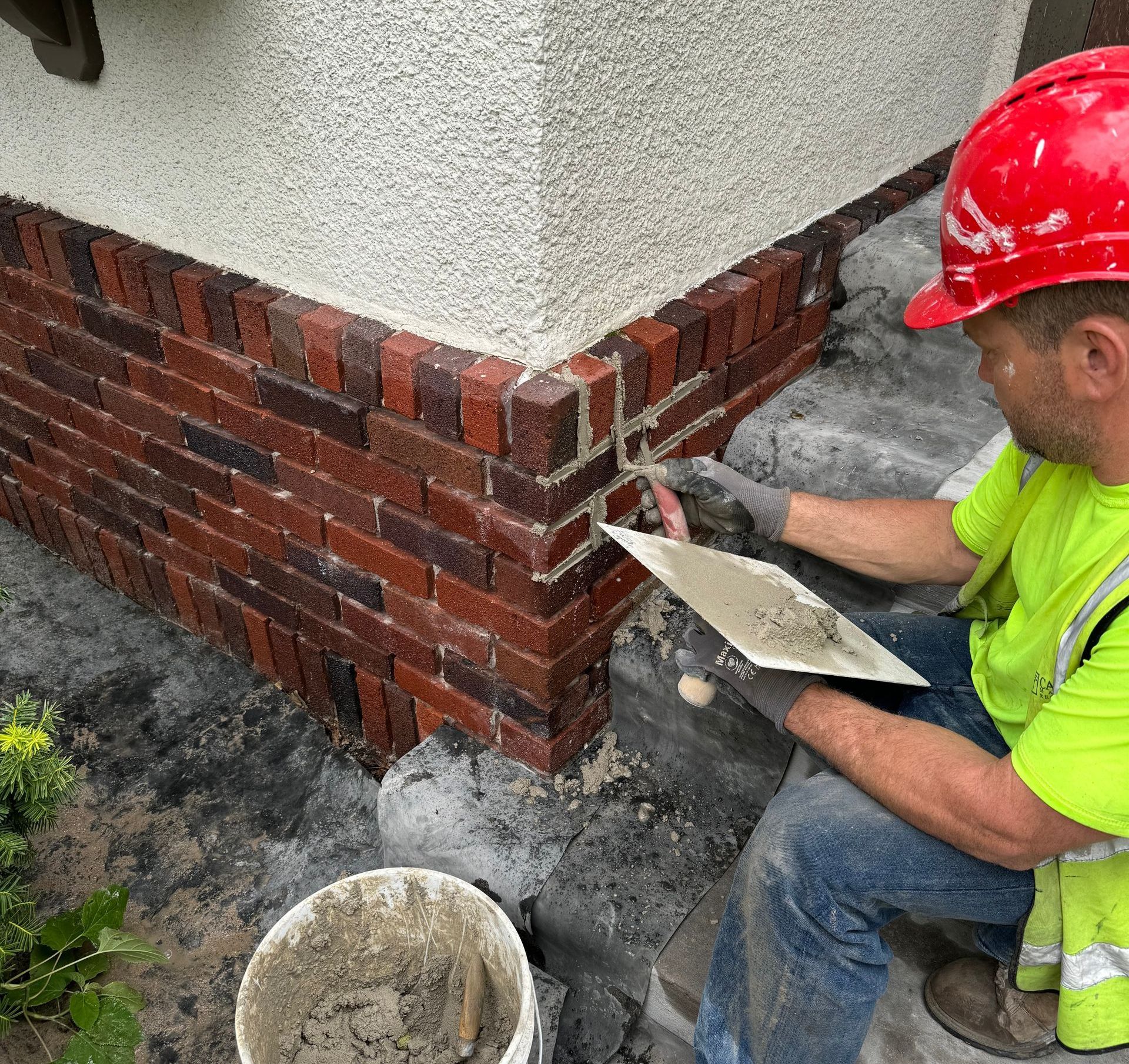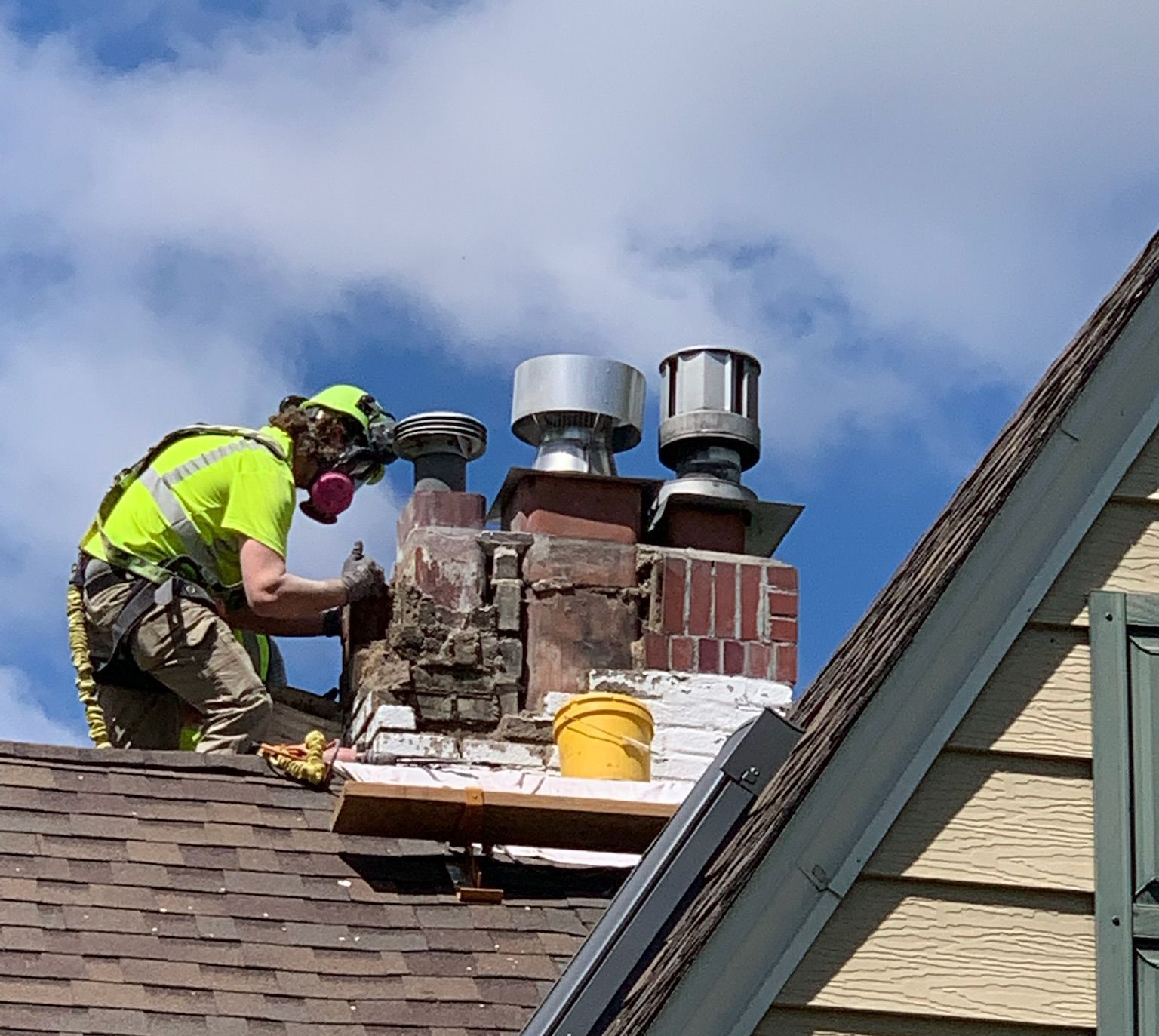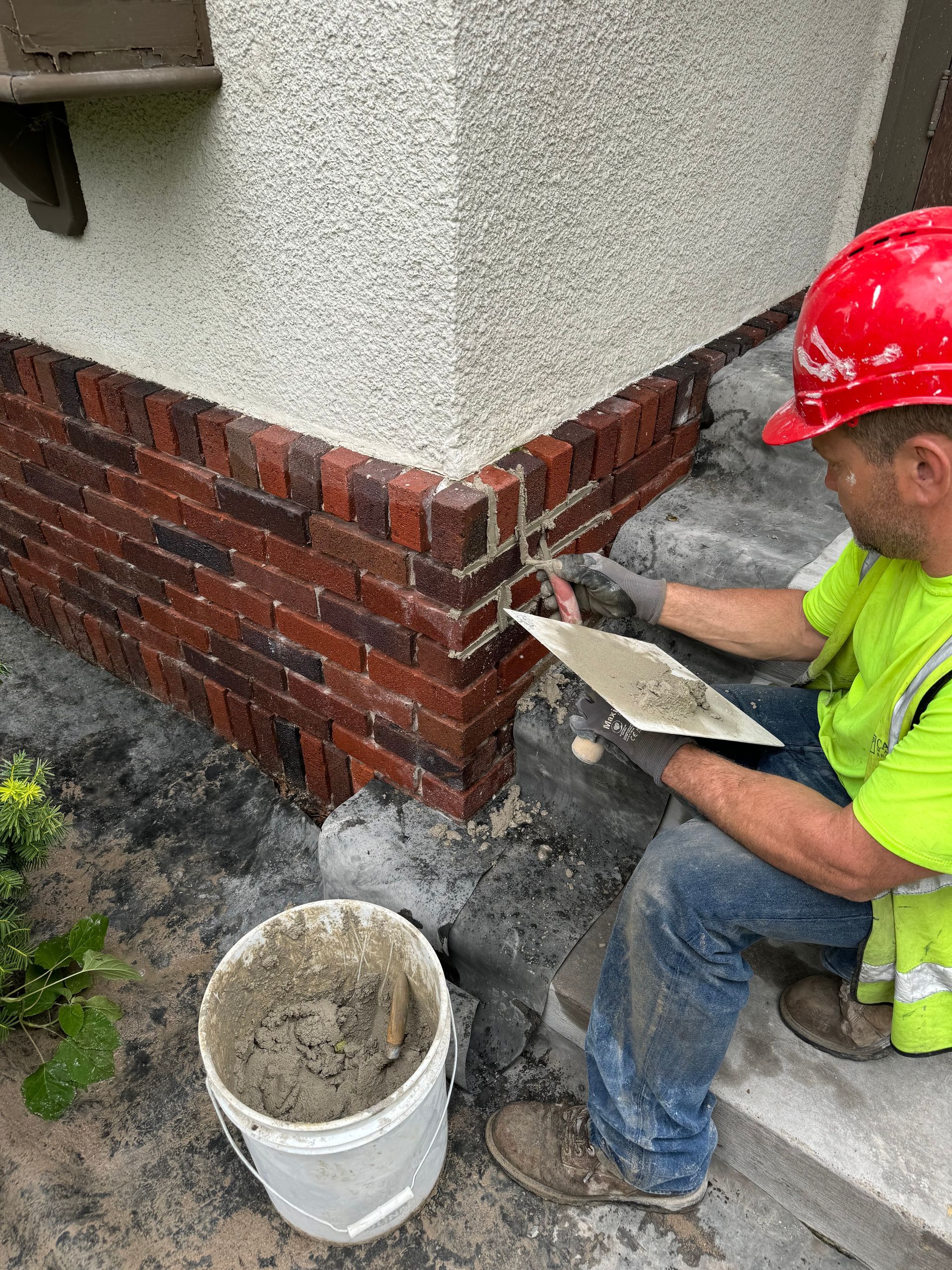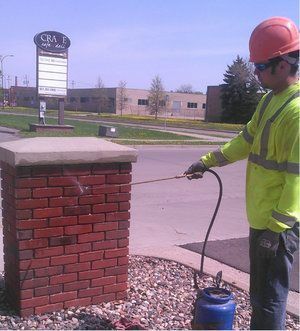Brick vs. Stone Masonry: What’s Best for Your St. Paul Property?
Brick or Stone?
When it comes to masonry restoration or new construction, homeowners and property managers in St. Paul are often faced with a key question: brick or stone? While both are timeless, durable materials, the right choice depends on your property’s age, aesthetic goals, budget, and maintenance expectations. In this article, we’ll compare brick and stone masonry through the lens of Minnesota’s climate, common building styles, and long-term performance.
Durability and Weather Resistance
Minnesota winters are no joke, and masonry must withstand the state’s dramatic temperature shifts and freeze-thaw cycles. Both brick and stone are strong materials, but they react differently to moisture and thermal stress:
- Brick is more porous than most types of stone, meaning it can absorb moisture. When saturated and exposed to freezing temperatures, it may spall or crack if not properly maintained. However, high-quality clay brick combined with proper drainage and mortar work can hold up well for decades.
- Stone, especially dense varieties like granite or limestone, is naturally more resistant to water penetration and freeze-related damage. It’s often used for foundations and retaining walls because of its unmatched structural integrity.
*Winner for freeze-thaw durability: Stone, especially in foundational applications.
Aesthetics and Architectural Style
St. Paul’s architectural history showcases both brick and stone—sometimes on the same building. Each offers a distinct visual identity:
- Brick provides a clean, uniform appearance and is often used in decorative patterns (bonding styles). It pairs well with Victorian and early 20th-century homes commonly found in neighborhoods like Cathedral Hill or Mac-Groveland.
- Stone offers a rugged, natural look. It’s commonly used in Romanesque or Tudor-style homes, older churches, and foundational walls. Cut stone or fieldstone can give a structure a sense of weight and permanence.
*Winner for visual character: Depends on the home’s style. Brick offers warmth and pattern; stone conveys strength and tradition.
Maintenance and Longevity
While both materials are long-lasting, their maintenance needs differ:
- Brick often requires periodic repointing—replacing the mortar joints—to prevent water infiltration. Repointing is especially critical when old, lime-based mortar begins to fail.
- Stone also needs repointing but less frequently. Its sheer density means the stones themselves rarely degrade. However, matching old stone for repairs can be trickier than sourcing brick.
*Winner for lower maintenance over time: Stone (if installed and sealed correctly).
Cost and Installation
Material and labor costs can vary significantly:
- Brick is typically more cost-effective, especially for large surface areas. It's faster to install and more readily available, making it ideal for walls and chimneys.
- Stone is more expensive due to its weight, irregular shapes, and the labor involved in fitting pieces together. However, its strength and longevity can justify the investment, particularly for foundational or high-impact areas.
*Winner for budget-conscious projects: Brick
*Winner for long-term investment and prestige: Stone
Best Uses for Each Material
Brick is best for:
- Chimneys
- Facades
- Garden walls
- Decorative exterior walls on historic homes
Stone is best for:
- Foundations
- Columns and retaining walls
- Entryways or accent features
- Buildings in exposed or high-moisture areas
- Some properties even benefit from a combination of both materials, such as stone foundations with brick facades—a common sight in older St. Paul homes.
Conclusion
Brick and stone each bring unique advantages to the table. Brick is affordable, classic, and easier to work with, while stone offers unmatched durability and a timeless look. If you're unsure which material is right for your project—or need expert guidance on maintaining your existing masonry—Capital Masonry Restoration can help.
We specialize in both brick and stone restoration for historic and modern properties across St. Paul and the surrounding greater Twin Cities area. Whether you're repairing, replacing, or building anew, our team can help you make the right choice for lasting results.
Contact us today to schedule a site evaluation or consultation.
